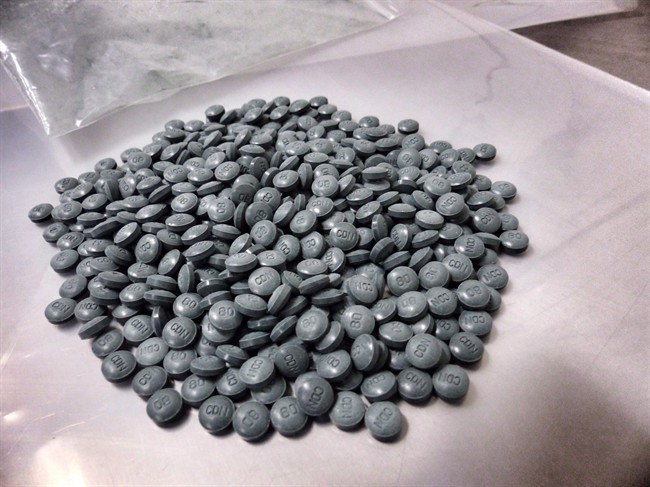Monthly deaths from illicit-drug use in the first quarter of the year are down 32 per cent from the same period last year, the B.C. Coroners Service says in the latest update on the overdose crisis in B.C., the hardest-hit province.
The monthly average for illicit-drug deaths so far is 89. In the same period in 2018, there were 132 deaths per month.
“It’s really significant and encouraging,” said Dr. Richard Stanwick, Vancouver Island chief medical health officer.
“From the Victoria perspective, the numbers are substantively down.”
While a snapshot of March shows Victoria is among the municipalities experiencing the highest number of illicit-drug overdoses — along with Vancouver, Surrey and Abbotsford — the number of deaths appear to be declining.
Victoria saw 13 deaths from Jan. 1 to March 31. If the trend continues, that would be a projected 52 deaths in 2019, compared with 96 for 2018.
Victoria deaths where fentanyl was detected totalled 11 for the first quarter. There were 89 in all of 2018.
The coroners service is cautiously optimistic that drug-overdose death numbers are declining over last year — 268 from Jan. 1 to March 31, down from 395 for the same period in 2018.
Stanwick said some view this as the crisis having peaked, but it’s too early to tell. “We’re really hopeful and we’d love to see this as the beginning of the end of this crisis, but it’s too early to tell and the coroners service investigations are far from complete.”
For each month of 2019 in the province, drug overdose deaths have dropped compared with the same month in 2018
Nanaimo has dropped off the list of communities of most concern.
“Nanaimo has shown remarkable improvement,” said Stanwick, adding what’s happening on the North Island is a bit more distressing.
Courtenay has so far seen six drug deaths in 2019, he said — almost half the drug-overdose deaths of Victoria, with not nearly half the population. In 2018, Courtenay saw 14 deaths for the entire year.
“Maybe there’s something else we need to be doing in the North Island.”
The Vancouver Island Health Authority has the second-lowest number of drug-overdose deaths of the five health authorities in the province.
The health authority recorded 35 suspected drug overdose deaths by March 31, 2019, higher than the 15 in Northern Health, but lower than all the others, with Fraser Health at a high of 91 deaths in the first quarter.
There is no data from the coroner to say what programs might be responsible for the decline.
Stanwick said drug-consumption sites have been effective at preventing fatalities — there were no deaths at supervised-consumption sites or drug-overdose prevention sites in the first quarter.
While ideally the sites would have associated treatment facilities, for now they are preventing deaths, which is the first step, he said. They’re also making connections and building trust between people who use drugs and health-care workers.
Other key findings from the coroners service show that more than two-thirds of the illicit-drug deaths from January to March involved people ages 30 to 59, with males accounting for four in every five deaths.
It also notes that 88 per cent of drug-overdose deaths in the first quarter of 2019 occurred indoors — 58 per cent were in private residences; 30 per cent in homes, including social or supportive housing, shelters and hotels; and 10 per cent outdoors.
Stanwick said it’s troublesome that people are still playing Russian roulette in their homes, not knowing what’s in the drugs they are taking or what concentration.
“There’s no quality control,” said Stanwick. The drugs sold on the street are likely scraped from basement work benches or kitchen countertops.
“When people are seeking security, they don’t necessarily seek sterility,” said Stanwick.
Of all the first-quarter drug deaths, 85 per cent involved fentanyl or its analogs, compared with 87 per cent last year.
Drug-overdose deaths in which fentanyl is detected appear to account for the increase in illicit-drug overdose deaths since 2012, says the coroners service.
Drug-overdose deaths excluding fentanyl have remained relatively stable at about 285 deaths per year.
Overall, the rate of illicit-drug-overdose deaths in B.C. in 2019 was 22 deaths per 100,000 people.
The coroners service says the data are preliminary and should be interpreted with caution, as they are subject to change.


